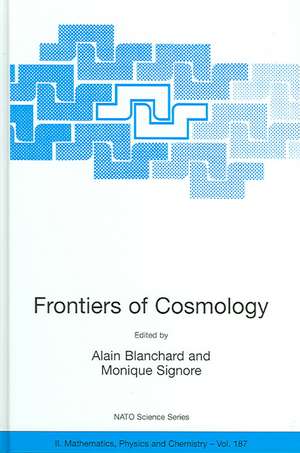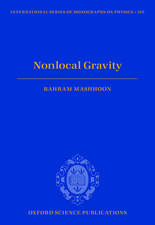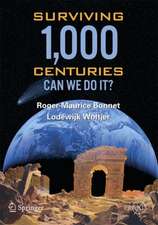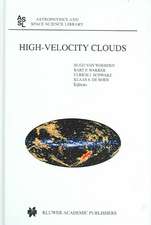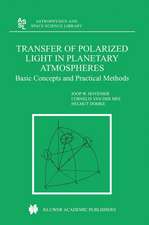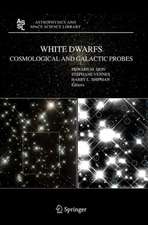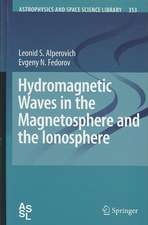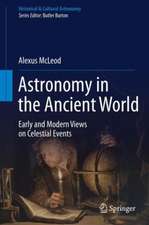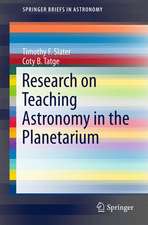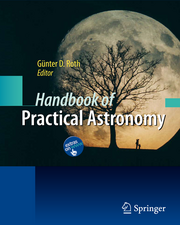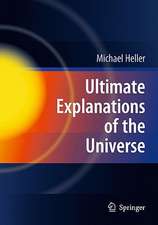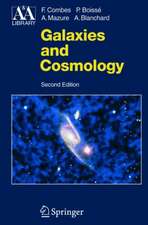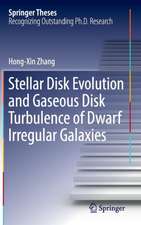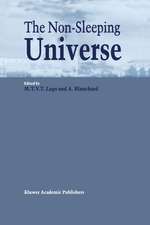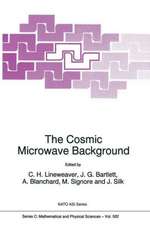Frontiers of Cosmology: Proceedings of the NATO ASI on The Frontiers of Cosmology, Cargese, France from 8 - 20 September 2003: NATO Science Series II: Mathematics, Physics and Chemistry, cartea 187
Editat de Alain Blanchard, Monique Signoreen Limba Engleză Hardback – 10 mai 2005
| Toate formatele și edițiile | Preț | Express |
|---|---|---|
| Paperback (1) | 1818.02 lei 6-8 săpt. | |
| SPRINGER NETHERLANDS – 10 mai 2005 | 1818.02 lei 6-8 săpt. | |
| Hardback (1) | 1824.32 lei 6-8 săpt. | |
| SPRINGER NETHERLANDS – 10 mai 2005 | 1824.32 lei 6-8 săpt. |
Din seria NATO Science Series II: Mathematics, Physics and Chemistry
- 18%
 Preț: 1272.32 lei
Preț: 1272.32 lei - 15%
 Preț: 644.30 lei
Preț: 644.30 lei - 18%
 Preț: 1848.33 lei
Preț: 1848.33 lei - 18%
 Preț: 1235.76 lei
Preț: 1235.76 lei - 15%
 Preț: 649.87 lei
Preț: 649.87 lei - 18%
 Preț: 957.75 lei
Preț: 957.75 lei - 15%
 Preț: 656.58 lei
Preț: 656.58 lei - 18%
 Preț: 1235.43 lei
Preț: 1235.43 lei - 18%
 Preț: 960.13 lei
Preț: 960.13 lei - 18%
 Preț: 1225.79 lei
Preț: 1225.79 lei - 15%
 Preț: 666.41 lei
Preț: 666.41 lei - 18%
 Preț: 1835.07 lei
Preț: 1835.07 lei - 15%
 Preț: 640.71 lei
Preț: 640.71 lei - 18%
 Preț: 954.45 lei
Preț: 954.45 lei - 18%
 Preț: 1227.36 lei
Preț: 1227.36 lei - 15%
 Preț: 646.11 lei
Preț: 646.11 lei - 18%
 Preț: 948.61 lei
Preț: 948.61 lei -
 Preț: 400.10 lei
Preț: 400.10 lei - 18%
 Preț: 959.82 lei
Preț: 959.82 lei - 18%
 Preț: 944.19 lei
Preț: 944.19 lei - 18%
 Preț: 1838.38 lei
Preț: 1838.38 lei - 18%
 Preț: 1222.49 lei
Preț: 1222.49 lei - 18%
 Preț: 939.94 lei
Preț: 939.94 lei - 18%
 Preț: 950.66 lei
Preț: 950.66 lei - 18%
 Preț: 957.44 lei
Preț: 957.44 lei - 15%
 Preț: 656.74 lei
Preț: 656.74 lei
Preț: 1824.32 lei
Preț vechi: 2224.78 lei
-18% Nou
Puncte Express: 2736
Preț estimativ în valută:
349.10€ • 373.29$ • 291.06£
349.10€ • 373.29$ • 291.06£
Carte tipărită la comandă
Livrare economică 17 aprilie-01 mai
Preluare comenzi: 021 569.72.76
Specificații
ISBN-13: 9781402030550
ISBN-10: 140203055X
Pagini: 344
Ilustrații: X, 333 p.
Dimensiuni: 156 x 232 x 24 mm
Greutate: 0.66 kg
Ediția:2005
Editura: SPRINGER NETHERLANDS
Colecția Springer
Seria NATO Science Series II: Mathematics, Physics and Chemistry
Locul publicării:Dordrecht, Netherlands
ISBN-10: 140203055X
Pagini: 344
Ilustrații: X, 333 p.
Dimensiuni: 156 x 232 x 24 mm
Greutate: 0.66 kg
Ediția:2005
Editura: SPRINGER NETHERLANDS
Colecția Springer
Seria NATO Science Series II: Mathematics, Physics and Chemistry
Locul publicării:Dordrecht, Netherlands
Public țintă
ResearchCuprins
Dedication, Preface Acknowledgments;
1 Basics of Cosmology
1. Geometry and Dynamics ; 2.Important quantities needed for observations
3. Some solutions of EFL equations:some cosmological models; 4. The standard Big Bang Nucleosynthesis (SBBN);5. Observations of ``primordial abundances'; 6. Confrontation of the observed ``primordial abundances'' to the predictions of the sBBN; Conclusions; References
2 X-ray View of Galaxy Clusters,
1. Observing Clusters in X-rays -- the Chandra Observatory;2. Regular Clusters XD Cooling Flows A478;3. Physics of Cluster Cores; Acknowledgments; References;
3 Clusters: an optical point of view;
1. Cluster detections in the optical;2. Studies of clusters;3. Acknowledgements;References
4 Cosmology with Clusters;
1. Introduction;2. What is a cluster? ; 3. The spherical model;4. The mass function;
5. Connection to the observations; 6. Properties of Clusters and scaling relations; 7. Clusters abundance evolution; 8. The baryon fraction; 9. Conclusion; References
5 Astrophysical detection of Dark Matter ;
1. Signals from the Dark universe ; 2. Inference probes;3. Physical probes;4. Conclusion; References
6 Non-thermal processes in galaxy clusters ;
1. Non-thermal and relativistic phenomena in galaxy clusters;2. The origin of cosmic rays in galaxy clusters; 3. The astrophysics of cosmic rays in galaxy clusters ; 4. Conclusions; References
7 Cosmological Inflation ;
1. Introduction; 2. The hot Big-Bang scenario and its problems ;3. Inflation and inflationary dynamics;4. Basics of cosmological perturbations ;Synchronous gauge;Longitudinal or Newtonian gauge; Flat-slicing gauge ; 5. Inflationary perturbations; 6. Basics of quantum field theory;7. Perturbation spectrum; 8. Conclusion; References
8 An introduction to quintessence ;
1. The two cosmological constant problems;2. A scalar field asdark energy;3. Stability of the wQ = Const regime ;4. Model building;5. Dark energy and structure formation; 6. Observational status; References
9 CMB Observational Techniques and Recent Results
1. Introduction;2. Observational Techniques ;3. Recent Observations; 4. Summary; Acknowledgments; References;
10 Fluctuations in the CMB ; Andrew H. Jaffe
1. Introduction;2. Cosmological Preliminaries; 3. The Last Scattering Surface ; 4. Perturbations on Large and Small Scales;5. Oscillations in the Primordial Plasma;6. The Power Spectrum of CMB Fluctuations;7. The CMB and Cosmological Parameters;8. Conclusions; Acknowledgments; References
11 Supernovae as astrophysical objects;
1. Some History;2. Supernova classification;3. Input Energy;4. Core-collapse supernovae ;
5. Type Ia supernovae ;6. Conclusions; References
12 Cosmology with Supernovae ;
1. Introduction;2. The Hubble constant;3. The expansion history of the universe;4. Universal acceleration according to Type Ia supernovae ;5. Characterising dark energy ;6. Conclusions; References
13 Gravitational lensing;
1. Introduction;2. Physical mechanisms; Multiple images and displacement field;The amplification matrix ;3. Gravitational lenses in Cosmology;The case of a spherically symmetric mass distribution;Critical lines and caustics in realistic mass distributions; 4. Cosmic Shear: weak lensing as a probe of the large-scale structure;5. Conclusions and perspectives: cosmic shear in a precision;Cosmology era; References
14 Dark Matter ;
1. Introduction;2. Local Dark Matter;3. Clusters and Groups of Galaxies;4. Masses of Galaxies ;
5. The Nature of Dark Matter;6. Summary;Acknowledgments;References
15 Dark Matter and Galaxy Formation;
1. Challenges of dark matter;2. Global baryon inventory;3. Confirmation via detailed census of MWG/M31; 4. Hierarchical galaxy formation;5. Unresolved issues in galaxy formation theory; 6. Resurrecting CDM ;7. An astrophysical solution: early winds;8. Observing CDM via the WIMP LSP; 9. The future ; References
16 Non-Baryonic Dark Matter;
1. The need for non-baryonic dark matter;2. Popular candidates for non-baryonic dark matter; 3. Neutralino dark matter searches; High energy neutrinos from the core of the Sun or of the Earth; Gamma-rays and cosmic rays from neutralino annihilation in galactic halos;Signals from neutralino annihilation at the Galactic Center; 4. Conclusions ; References
1 Basics of Cosmology
1. Geometry and Dynamics ; 2.Important quantities needed for observations
3. Some solutions of EFL equations:some cosmological models; 4. The standard Big Bang Nucleosynthesis (SBBN);5. Observations of ``primordial abundances'; 6. Confrontation of the observed ``primordial abundances'' to the predictions of the sBBN; Conclusions; References
2 X-ray View of Galaxy Clusters,
1. Observing Clusters in X-rays -- the Chandra Observatory;2. Regular Clusters XD Cooling Flows A478;3. Physics of Cluster Cores; Acknowledgments; References;
3 Clusters: an optical point of view;
1. Cluster detections in the optical;2. Studies of clusters;3. Acknowledgements;References
4 Cosmology with Clusters;
1. Introduction;2. What is a cluster? ; 3. The spherical model;4. The mass function;
5. Connection to the observations; 6. Properties of Clusters and scaling relations; 7. Clusters abundance evolution; 8. The baryon fraction; 9. Conclusion; References
5 Astrophysical detection of Dark Matter ;
1. Signals from the Dark universe ; 2. Inference probes;3. Physical probes;4. Conclusion; References
6 Non-thermal processes in galaxy clusters ;
1. Non-thermal and relativistic phenomena in galaxy clusters;2. The origin of cosmic rays in galaxy clusters; 3. The astrophysics of cosmic rays in galaxy clusters ; 4. Conclusions; References
7 Cosmological Inflation ;
1. Introduction; 2. The hot Big-Bang scenario and its problems ;3. Inflation and inflationary dynamics;4. Basics of cosmological perturbations ;Synchronous gauge;Longitudinal or Newtonian gauge; Flat-slicing gauge ; 5. Inflationary perturbations; 6. Basics of quantum field theory;7. Perturbation spectrum; 8. Conclusion; References
8 An introduction to quintessence ;
1. The two cosmological constant problems;2. A scalar field asdark energy;3. Stability of the wQ = Const regime ;4. Model building;5. Dark energy and structure formation; 6. Observational status; References
9 CMB Observational Techniques and Recent Results
1. Introduction;2. Observational Techniques ;3. Recent Observations; 4. Summary; Acknowledgments; References;
10 Fluctuations in the CMB ; Andrew H. Jaffe
1. Introduction;2. Cosmological Preliminaries; 3. The Last Scattering Surface ; 4. Perturbations on Large and Small Scales;5. Oscillations in the Primordial Plasma;6. The Power Spectrum of CMB Fluctuations;7. The CMB and Cosmological Parameters;8. Conclusions; Acknowledgments; References
11 Supernovae as astrophysical objects;
1. Some History;2. Supernova classification;3. Input Energy;4. Core-collapse supernovae ;
5. Type Ia supernovae ;6. Conclusions; References
12 Cosmology with Supernovae ;
1. Introduction;2. The Hubble constant;3. The expansion history of the universe;4. Universal acceleration according to Type Ia supernovae ;5. Characterising dark energy ;6. Conclusions; References
13 Gravitational lensing;
1. Introduction;2. Physical mechanisms; Multiple images and displacement field;The amplification matrix ;3. Gravitational lenses in Cosmology;The case of a spherically symmetric mass distribution;Critical lines and caustics in realistic mass distributions; 4. Cosmic Shear: weak lensing as a probe of the large-scale structure;5. Conclusions and perspectives: cosmic shear in a precision;Cosmology era; References
14 Dark Matter ;
1. Introduction;2. Local Dark Matter;3. Clusters and Groups of Galaxies;4. Masses of Galaxies ;
5. The Nature of Dark Matter;6. Summary;Acknowledgments;References
15 Dark Matter and Galaxy Formation;
1. Challenges of dark matter;2. Global baryon inventory;3. Confirmation via detailed census of MWG/M31; 4. Hierarchical galaxy formation;5. Unresolved issues in galaxy formation theory; 6. Resurrecting CDM ;7. An astrophysical solution: early winds;8. Observing CDM via the WIMP LSP; 9. The future ; References
16 Non-Baryonic Dark Matter;
1. The need for non-baryonic dark matter;2. Popular candidates for non-baryonic dark matter; 3. Neutralino dark matter searches; High energy neutrinos from the core of the Sun or of the Earth; Gamma-rays and cosmic rays from neutralino annihilation in galactic halos;Signals from neutralino annihilation at the Galactic Center; 4. Conclusions ; References
